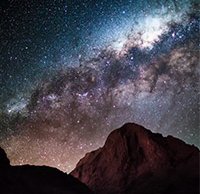Timelapse tips and tricks: Planning, composing and shooting a Milky Way timelapse
posted Sunday, September 4, 2016 at 4:59 AM EST

Rhino Camera Gear recently published an excellent video guide for how to shoot a Milky Way timelapse. In the video below, we see a Rhino Slider EVO Carbon 24", Rhino Motion, Rhino Arc, Sony A7S camera and Rokinon 14mm lens being used together, but you don't necessarily need all of that fancy gear.
One of the most important parts of the process takes place before you even start shooting: Planning is critical. Light pollution is very important to consider when planning your timelapse. You can learn more about light pollution and its impact on night photography here. Lunar phases are important too, as you want to shoot on or around the night of a new moon. However, even when the moon phase is poor for shooting, such as during the full moon, if you shoot after the moon has set you can still get in some great night shooting. Regarding the setting of the sun, typically you shoot two or three hours after the sun drops below the horizon and end the time lapse about an hour before the sun rises. With that said, you can certainly shoot before sunset and after sunrise, such as in the video I've included at the bottom of this article.
What about composition? In the tutorial below, the photographer likes to use a three-layered approach. For him, the foreground will be a rocky area, trees form the "subject" and the Milky Way will occupy the top portion of the image. To learn how to use Rhino gear to shoot a Milky Way time lapse and what other gear you will need, check out the video below.
If that video doesn't get you excited to get out there and shoot a Milky Way time lapse video, then maybe this awesome video from Nicholas Buer will inspire you.
(Seen via ISO 1200)